Related Research Articles
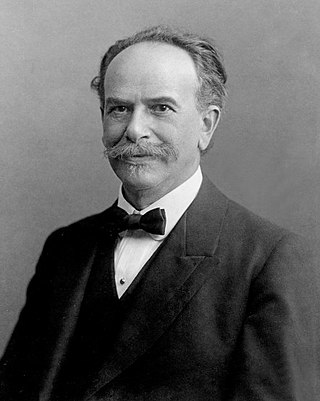
Franz Uri Boas was a German-American anthropologist and a pioneer of modern anthropology who has been called the "Father of American Anthropology". His work is associated with the movements known as historical particularism and cultural relativism.
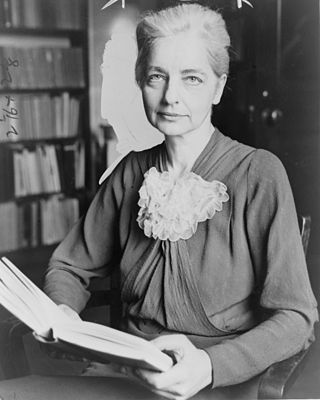
Ruth Fulton Benedict was an American anthropologist and folklorist.
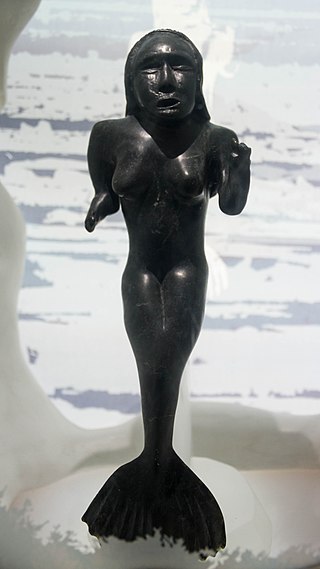
Sedna is the goddess of the sea and marine animals in Inuit mythology, also known as the Mother of the Sea or Mistress of the Sea. The story of Sedna, which is a creation myth, describes how she came to rule over Adlivun, the Inuit underworld.
In Inuit religion, Adlivun are the spirits of the departed who reside in the underworld, and by extension the underworld itself, located beneath the land and the sea. The souls are purified there, in preparation for the travel to the Land of the Moon, where they find eternal rest and peace. Sedna, Torngarsuk and the tornat and tupilaq live in Adlivun, which is usually described as a frozen wasteland. Sedna is the ruler of the land, and is said to imprison the souls of the living as part of the preparation for the next stage of their journey.
The Adlet are a race of creatures in the Inuit mythology of Greenland, as well as the Labrador and Hudson Bay coasts. While the word refers to inland native American tribes, it also denotes a humanoid dog-legged tribe. The lower part of the body of the canine Adlet is like that of a dog and their upper part is like a man's. All Adlet run quickly, and their encounters with men usually end with man as the victor.
Anguta is the father of the sea goddess Sedna in the Inuit religion.

Satet,Satit or Satjet, Satjit in Ancient Egyptian, Greek: Satis, also known by numerous related names, was an Upper Egyptian goddess who, along with Khnum and Anuket, formed part of the Elephantine Triad. A protective deity of Egypt's southern border with Nubia, she came to personify the former annual flooding of the Nile and to serve as a war, hunting, and fertility goddess.
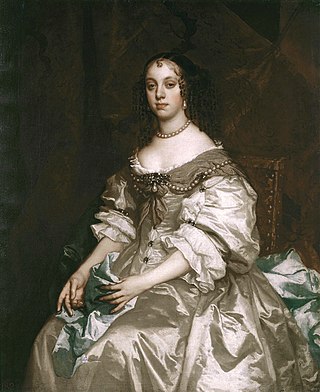
Catherine of Braganza was Queen of England, Scotland and Ireland during her marriage to King Charles II, which lasted from 21 May 1662 until his death on 6 February 1685. She was the daughter of John IV of Portugal, who became the first king from the House of Braganza in 1640 after overthrowing the 60–year rule of the Spanish Habsburgs over Portugal and restoring the Portuguese throne which had first been created in 1143. Catherine served as regent of Portugal during the absence of her brother Peter II in 1701 and during 1704–1705, after her return to her homeland as a widow.

Cold Comfort Farm is a comic novel by English author Stella Gibbons, published in 1932. It parodies the romanticised, sometimes doom-laden accounts of rural life popular at the time, by writers such as Mary Webb.
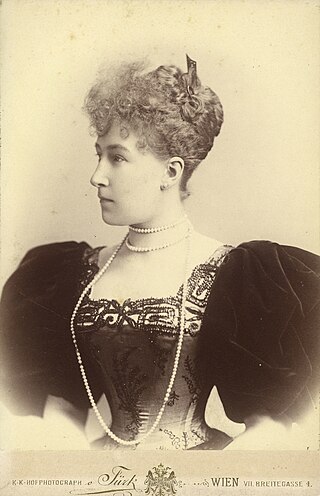
Princess Stéphanie Clotilde Louise Herminie Marie Charlotte of Belgium was a Belgian princess who became Crown Princess of Austria through marriage to Crown Prince Rudolf, heir to the throne of the Austro-Hungarian Empire.

Archduchess Elisabeth Marie Henriette Stephanie Gisela of Austria was the only child of Rudolf, Crown Prince of Austria, and Princess Stéphanie of Belgium. Her father was the son and heir apparent of Emperor Franz Joseph I of Austria, and her mother was a daughter of King Leopold II of Belgium. She was known to her family as "Erzsi", a diminutive of her name in Hungarian. Later nicknamed The Red Archduchess, she was famous for becoming a socialist and a member of the Austrian Social Democratic Party.

Frederick Haynes Newell, served as the first Director of the United States Reclamation Service and was born in Bradford, Pennsylvania. He graduated in 1885 from the Massachusetts Institute of Technology and after field experience in Colorado and other states was appointed on October 2, 1888, as Assistant Hydraulic Engineer of the United States Geological Survey, being the first aide designated under Major John Wesley Powell to investigate the extent to which the arid regions of the United States might be reclaimed by irrigation. He was subsequently appointed Chief of the Hydrographic Branch.

Eleanor Gwyn was an English stage actress and celebrity figure of the Restoration period. Praised by Samuel Pepys for her comic performances as one of the first actresses on the English stage, she became best known for being a long-time mistress of King Charles II of England.

The Inuit angakkuq is an intellectual and spiritual figure in Inuit culture who corresponds to a medicine man. Other cultures, including Alaska Natives, have traditionally had similar spiritual mediators, although the Alaska Native religion has many forms and variants.
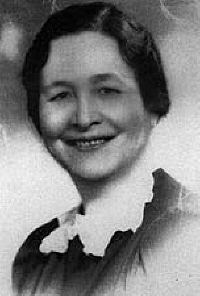
Ella Cara Deloria, also called Aŋpétu Wašté Wiŋ, was a Yankton Dakota (Sioux) educator, anthropologist, ethnographer, linguist, and novelist. She recorded Native American oral history and contributed to the study of Native American languages. According to Cotera (2008), Deloria was "a pre-eminent expert on Dakota/Lakota/Nakota cultural religious, and linguistic practices." In the 1940s, Deloria wrote a novel titled Waterlily, which was published in 1988, and republished in 2009.
The American Folklore Society (AFS) is the United States (US)-based professional association for folklorists, with members from the US, Canada, and around the world, which aims to encourage research, aid in disseminating that research, promote the responsible application of that research, publish various forms of publications, advocate for the continued study and teaching of folklore, etc. The Society is based at Indiana University and has an annual meeting every October. The Society's quarterly publication is the Journal of American Folklore. The current president is Marilyn White.

The Journal of American Folklore is a peer-reviewed academic journal published by the American Folklore Society. The journal has been published since the society's founding in 1888. Since 2003, this has been published at the University of Illinois Press. It publishes on a quarterly schedule and incorporates scholarly articles, essays, and notes relating to its field. It also includes reviews of books, exhibitions and events.

Augusta of Prussia was a German salonist, painter, and Electress consort of Hesse by marriage to William II, Elector of Hesse. She was the third daughter and fifth child of Frederick William II of Prussia and Frederika Louisa of Hesse-Darmstadt.

"Up in the Gallery" is a short piece of fiction written by Franz Kafka. It was created between November 1916 and February 1917 and published in the collection Ein Landarzt in 1919. The story offers two versions of a scene in which a young man watches a circus ringmaster and a woman on horseback.

Elizabeth Piper Ensley, was an educator and an African-American suffragist. Born in Massachusetts, Ensley was a teacher on the eastern coast of the country. She moved to Colorado where she achieved prominence as a leader in the Colorado suffrage movement. She was also a journalist, activist, and a leader and founder of local women's clubs.
References
- ↑ E. Steinbock, Steven. These Words upon Our Hearts: A Lexicon of Judaism and World Religions. Urj Press. p. 44. ISBN 978-0-8074-0785-1.
- ↑ Wardle, H. Newell (1900). "The Sedna Cycle", American Anthropologist, Volume 2, p.575. American Anthropological Association. [ISBN unspecified].
- ↑ Boas, Franz (1888). "The Central Eskimo, Annual Report, p.588. Smithsonian Institution and Bureau of American Ethnology. [ISBN unspecified].